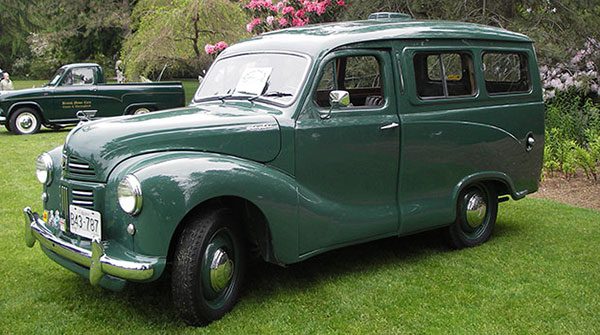
Austin 1953 A40 Countryman estate wagon
Restoring the vintage Austin Countryman was a labour of love and triumph

During the 1950s and early ’60s, before anyone had heard of Honda, Nissan, Toyota or Hyundai, the bestselling import brand in Canada was Austin. Models like the Devon, Somerset, Cambridge, Westminster and, eventually, Mini, dominated the small-car market.
Like many other Canadian families, we usually had an Austin of one type or another in the driveway when I was growing up.
My British ex-pat mother pretty much insisted on it, much to the chagrin and frustration of my Pontiac-driving father, who seemed to spend every spare minute fixing the little British saloons.
Austins were comparatively easy on gas, true, but hell on wheels when it came to maintenance. Fried head gaskets, out-of-tune carburetors and mysterious electrical glitches were routine nightmares.
Nor did they adapt well to Canadian driving conditions. For example, our family summer holiday sometimes involved driving through the Rockies to visit relatives in Alberta, which meant traversing the pre-Trans-Canada Cascades Highway.
This was two lanes all the way, and sometimes too narrow to accommodate trucks and cars at the same time. If you came across a logging truck or transport coming the other way up in the mountains, you might have to squeeze to the edge of the road and hope and pray he’d manage to get by. If that didn’t work, you backed your car up until you found a widening in the road.
In 1986, one of my father’s neighbours happened to be cleaning out his greenhouse and there, resting sedately under a canvas tarp, was a 1953 A40 Countryman estate wagon purchased at an auction years before. Although it hadn’t run in over 20 years and was full of mice poop and wasps nests, it was all there and complete. My father fell for it like a blind roofer.
Apparently, the B.C. Forest Service bought a fleet of these things for their timber cruisers and government inspectors.
Starting life as garden-variety A40 sedans, Austin shipped them en masse to an aftermarket coach builder, who fitted the back estate section of the vehicle. With wood and leather interior trim, folding back seats, and a special low-ratio differential, they were almost luxurious inside. They did duty in the forests and back roads of B.C. despite lacking any kind of four-wheel-drive system.
Designed for work, not play, they weren’t built in large numbers. There might be a dozen of them left worldwide, but mostly in Canada.
After a year of restoration, the ex-Forestry Service Countryman was roadworthy and ready to make the rounds at the show and shines. My father, who taught automotive shop in high school for 25 years, hoisted the body off the frame. Everything was redone: new engine, new running gear, new brakes, new tires, new wiring, new paint.
Miraculously, the interior was almost perfect and only required a little TLC. Even the semaphore-style flip-out signal indicators worked. Initially, because of the low-ratio rear differential, the car wouldn’t do more than 70 km/h without revving itself to death. But once that was changed, it could manage 100 km/h with a bit left over.
The Countryman went on to win a wall full of trophies and plaques at various show and shines over the years. Although it was often surrounded by much more expensive and prestigious automobiles, the little olive-drab Austin was always a crowd favourite.
It was a treat to watch the smiles that broke out when people saw it. Sometimes they’d be moved to tears, as was the case with one middle-aged Scotsman who described how his father, a butcher, had one for years back in the U.K.
All was not sweetness and light, of course.
A couple of years ago, it threw a rod right in the middle of a busy freeway. I was leading the way in my car, and as I looked in the rearview mirror to see how things were going, I heard a muffled thud accompanied by debris and oil spewing out of the bottom of the car.
Popping the bonnet revealed a fist-sized hole through the side of the engine block and bits and pieces of shredded steel all over the ground.
Fortunately, my father had a spare motor. Back home, he took out the blown engine and installed the new unit (at age 82, mind you).
These days, it sits in a truck museum near Vancouver and continues to steal people’s hearts.
Ted Laturnus has been an automotive journalist since 1976. He has been named Canadian Automotive Journalist of the Year twice and is past president of the Automotive Journalists Association of Canada (AJAC).
For interview requests, click here.
The opinions expressed by our columnists and contributors are theirs alone and do not inherently or expressly reflect the views of our publication.
© Troy Media
Troy Media is an editorial content provider to media outlets and its own hosted community news outlets across Canada.


